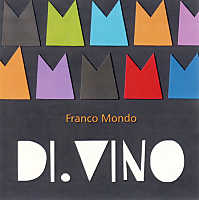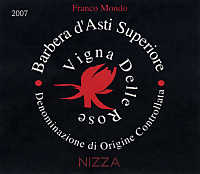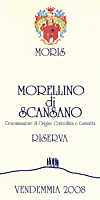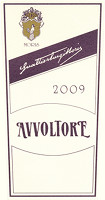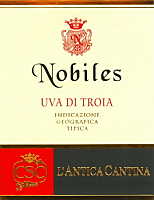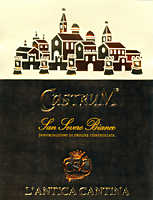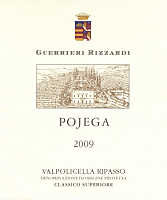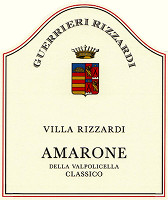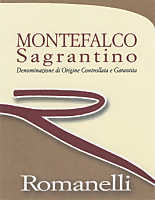|
The subject of natural wines certainly is among the most trendy ones in the
world of the beverage of Bacchus. It is very debated, sometimes talking
nonsense, fighting ridiculous ideological wars, there are factions of wine
lovers and taster who will not have a wine in case it does not have the
imprimatur in the label or in words it is a “natural wine”. What a
natural wine is, as a matter of fact, no one can give an answer or define
it clearly. In general terms - without any pretension of defining it - a
natural wine is produced with the essential intervention of man, both in
vineyard and in the winery, while limiting, or even avoid, the use of substance
of chemical origin, by favoring - at the same time - natural practices
and methods. Many forget, like to say, the only final and natural process about
grape juice, even in case the intervention of man is limited to the essential,
is to become vinegar. Allowing a must to ferment without interfering in any way
- that is like “Nature” wants - means allowing bacteria and yeast to do the
job Nature assigned to them, with the unavoidable result of making vinegar.
Avoiding the development of vinegar during the production of wine requires the
indispensable intervention of man who, by using technology and the control of
chemical-biological processes, avoids the contamination and development of
bacteria, as well as faults. The explicit goal - and certainly noble - of the
production of natural wines is producing a beverage capable of expressing the
potential and quality of a territory, considered as a whole of many and
different factors. Among these elements, besides grapes, territory and micro
climate, there is also yeast, sometimes a controversial element,
naturally found in the air and which settles on the skin of grapes.
Yeast, just like all the other living organisms and beings, fight a “war” for
survival, with the result the most weak or minority organisms are being
overwhelmed by the stronger species which become the dominant one. The same
happens - as a matter of fact - during the fermentation of wine: an unrelenting
struggle in which the stronger species win therefore becoming the dominant ones
responsible for the effects of fermentation.
Yeast, during fermentation, does not “demolish” sugar only, transforming it
into ethyl alcohol and other substances, including carbon dioxide and sulfur
dioxide. During fermentation, yeast, as a consequence of its activity, also
gives wine specific organoleptic qualities, and can modify - even drastically -
the olfactory and gustatory qualities of the beverage. The organoleptic
qualities produced during fermentation are defined “secondary”, whereas the
ones defined as “primary” are about the specific qualities of grapes and
“tertiary” ones are about the result of the aging process. The role of yeast
in the development of aromas in a wine is however fundamental and, it is not by
chance, it is said primary aromas are hidden in the grape and it is the
fermentation which reveals them”. Every kind and species of yeast, as well as
bacteria, during their activity develop different aromas and flavors and not all
the times these “organoleptic sensations” are considered positive for the
wine.
|
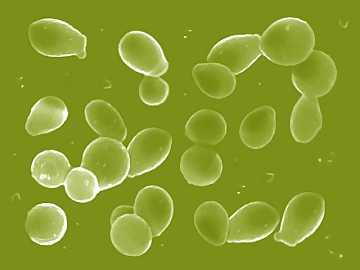 | |
| Saccharomyces Cerevisiae:
the most used yeast species used for the fermentation of wine | |
|
The “colony” of yeast and bacteria getting in contact with the must and that
will transform it into wine, is not easily determined, to be precise, is
determined only by a specific laboratory analysis. On the skin of grapes are
naturally present the very same yeast and bacteria found in the area where the
vineyard is being cultivated. As the grape is crushed, essential operation in
order to get the must, these yeast and bacteria get in contact with grape juice,
therefore starting the fermentation process. Every yeast species, besides giving
wine specific organoleptic qualities, also need proper conditions for its
biological activity, among them, there is temperature. Thanks to the research on
fermentation and on biological activity of yeast - research which had a
fundamental contribution with the work of Louis Pasteur - the control of
temperature during fermentation allows, as a matter of fact, the full activity
of some yeast and the inhibition of others.
The main yeast strain responsible for the fermentation of the must is the famous
Saccharomyces Cerevisiae, the same used for the fermentation of beer. It
is not the only yeast strain responsible for the production of wine, but - as a
matter of fact - it is the one mainly favored during fermentation. This
particular yeast is the same selected in laboratories for their so called
“selected yeast”. Saccharomyces Cerevisiae is also found in the so
called “indigenous yeast”, as well as other yeast and bacteria, not always
useful for a stable and useful fermentation according to an enological point of
view. Using the so called “indigenous yeast” or “autochthonous”, certainly
means giving wine the “autochthonous” qualities of a place, but also taking
the risk of developing a colony of unknown bacteria and yeast and not
always producing a decent result.
For this reason, producers who use the “indigenous” yeast - that is the one
Nature and all the other environmental factors existing in their vineyard
deposit on the skin of grapes - rarely take the risk of using it “as such”.
Saved the case they are lucky of cultivating a vineyard in a territory
blessed by the good fate of Mother Nature, in which are found
“positive” yeast and bacteria for enological purposes, in general terms a
sample of the indigenous yeast is sent to a laboratory in order to select it and
to “get rid of” unwanted yeast and bacteria. It should also be said that in
the winery is however worked a “natural” selection of the indigenous yeast
during the control of fermentation. One of the most common natural
techniques in winery is the control of fermentation temperature. This technique
- which certainly is useful and accepted as essential in order to get a fine
wine - as a matter or fact, works a fierce selection of the colony of yeast
found in the must, while inhibiting the activity of the ones which cannot
“live” at certain temperatures.
It should also be noticed that the common technique of sanitizing the must
before starting fermentation, by adding sulfur dioxide, works a preliminary
selection of yeast. Sulfur dioxide literally poisons some strain of yeast, all
considered negative for quality fermentation, a treatment to which survives the
stronger and more resistant strains only. The rooms in which the fermentation
takes place are naturally populated by yeast, not only the ones found in
the air, but also the ones developed and multiplied during past fermentations.
Also the yeast found in the winery will therefore pollute the must, by
adding themselves to the ones already present, a phenomenon which can be
considered as a further selection. The unavoidable consequence of these factors,
besides technical and environmental conditions, is to work a selection on
indigenous yeast. The final result is therefore strongly affected by the skill
of the wine maker in controlling the fermentation process, as well as “living”
in a privileged environmental context.
Wine, of course, is not the simple result of fermentation done by yeast, it is
however undeniable this fundamental process strongly affects the organoleptic
qualities of the final product. In order to get positive organoleptic qualities
from fermentation, although identifying a place and a terroir, it is however
indispensable this process is scrupulously controlled. For this reason, many
wine producers prefer using a selected yeast, capable of making fermentation
more reliable, controllable and stable. The use of selected yeast also produces
a specific and typical organoleptic result, therefore causing the unavoidable
homologation of wine's organoleptic qualities. In other words, a wine
produced with selected yeast can be easily recognized by a quick olfactory
examination, as their aromatic characteristics are common to all the wines in
which it has been used in fermentation.
There are many types of selected yeast and laboratories producing it, frequently
offer cultures and strains suited for the production of many types of wine. The
main producers of selected yeast can offer strains suited for the production of
white wines, aromatic white wines, red and rosé wines, sparkling and sweet
wines, as to mention the most common cases. Every strain of yeast has specific
qualities which are not only related to the specific organoleptic characteristic
it will give to the wine. To better clear this concept, let's consider, for
example, a sweet wine. One of the characteristics of these wines is the high
alcohol by volume, frequently higher than 15%, therefore it is indispensable
the yeast used for its fermentation can survive and “work” also with high
quantities of alcohol. In these cases it is in fact preferred the use of
Saccharomyces Bayanus, capable of tolerating a higher quantity of alcohol
than the famous Saccharomyces Cerevisiae. Both the two yeast belong to
the Saccharomyces genus, however they produce different fermentation
results, by giving the wine specific organoleptic qualities.
If it is true the organoleptic contribution of selected yeast is pretty
predictable, the one of indigenous yeast is quite unpredictable. The
unforeseeability of indigenous yeast - autochthonous or non selected - must
however be considered both in a positive and negative way. In case the control
of fermentation is not properly done, as well as in presence of a diversified
and uncertain “colony” of yeast and bacteria, the result could be a wine with
pretty poor organoleptic qualities, also characterized by evident faults.
Moreover, the fermentation done with indigenous yeast can be considered as a
sort of lottery: in case negative yeast and bacteria become dominant, the result
will certainly be negative. By using the indigenous yeast, and in case the
fermentation is mainly done by positive yeast for quality wine making, the final
result will however and in any case be determined also by the organoleptic
influence of the other minority yeast and bacteria.
This does not mean the influence of other minority yeast and bacteria
necessarily is negative: most of the times their contribution on wine's
organoleptic qualities is absolutely positive, giving a greater complexity and
sensorial diversification. The use of indigenous yeast certainly is more
difficult than the selected one: this is the main reason for which most of
producers prefer not to use it. Selected yeast ensures a quicker start of
fermentation, a better control, higher stability, a higher warranty on the final
result, including aromas and flavors. On the other hand, the huge variability of
the colony making the so called indigenous yeast, makes it very unpredictable,
despite some sanitizing and wine making practices work - as a matter of fact - a
considerable selection on its components.
The population of yeast and bacteria making the indigenous yeast must however be
considered as the expression of a specific territory, just like all the other
environmental factors, as it directly affects the organoleptic qualities of
wine. According to this point of view, the use of selected yeast hides these
typical and territorial qualities, by giving homologated aromas and flavors
which can be replicated everywhere. The influence of yeast - both selected and
indigenous - on the organoleptic qualities of wine is not however destined to
mark the wine forever. With time and aging, the organoleptic qualities given by
yeast to the wine tend to attenuate, while allowing the genuine character
of the wine to emerge, as well its tertiary qualities. The impact of yeast on
wine is in fact very strong and dominant after the end of fermentation and
during the youth of wine, progressively attenuating its influence with time.
|


